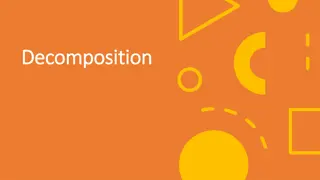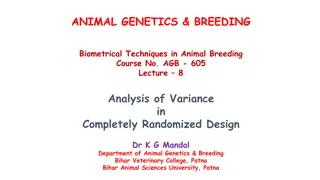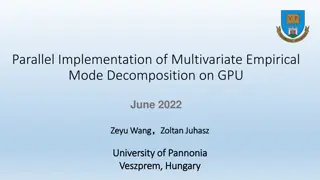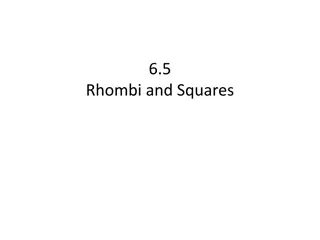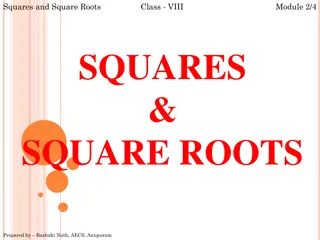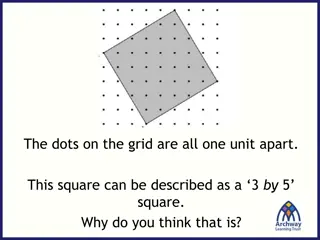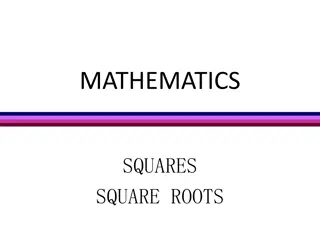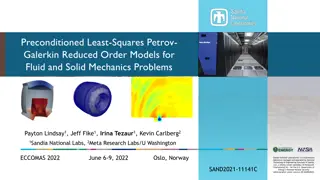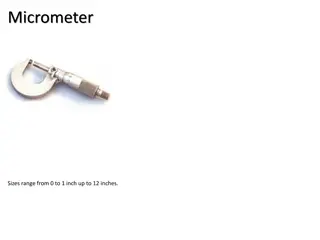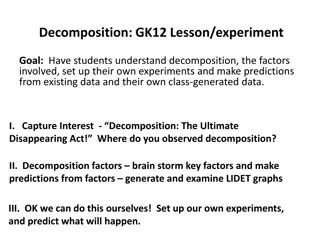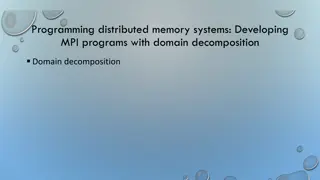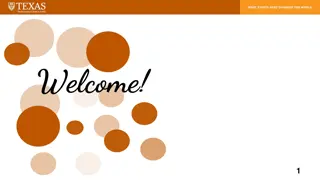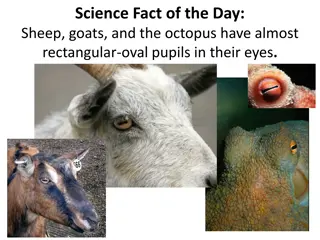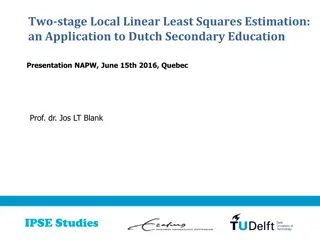Decomposition of Treatment Sums of Squares
Decomposition of treatment sums of squares involves utilizing prior information about treatment structure to analyze treatment group means through contrasts and hypothesis testing. This process allows for the testing of specific hypotheses and the creation of F-statistics. In an example scenario with control and two equivalent treatments, orthogonal contrasts play a crucial role in decomposing treatment sums of squares for more powerful significance testing.
Download Presentation

Please find below an Image/Link to download the presentation.
The content on the website is provided AS IS for your information and personal use only. It may not be sold, licensed, or shared on other websites without obtaining consent from the author.If you encounter any issues during the download, it is possible that the publisher has removed the file from their server.
You are allowed to download the files provided on this website for personal or commercial use, subject to the condition that they are used lawfully. All files are the property of their respective owners.
The content on the website is provided AS IS for your information and personal use only. It may not be sold, licensed, or shared on other websites without obtaining consent from the author.
E N D
Presentation Transcript
Decomposition of Treatment Sums of Squares using prior information on the structure of the treatments and/or treatment groups 1
Contrasts, notation. For a One-way ANOVA, a contrast is a specific comparison of Treatment group means. Contrast constants are composed to test a specific hypothesis related to Treatment means based upon some prior information about the Treatment groups. For k treatment groups, contrast constants are a sequence of numbers such that 0 i i = , ......, c c c 1 2, k k = c 1 2
Contrasts and Hypothesis testing A given contrast will test a specific set of hypotheses: k c = : 0 H 0 i i = 1 i and k c : 0 H a i i = 1 i k = using C c Y . i i = 1 i to create an F-statistic with one numerator df. 3
Example 1: Control and two equivalent treatments Suppose we have two treatments which are supposed to be equivalent. For example, each of two drugs is supposed to work by binding to the receptor for adrenalin. Propanolol is such a drug sometimes used for hypertension or anxiety. We may think that: the two drugs are equivalent, and they are different from Control 4
The two contrasts: Control Drug A Drug B Contrast 1 -1 Contrast 2 0 -1 +1 Contrast 1 tests whether or not the Control group differs from the groups which block the adrenalin receptors. Contrast 2 tests whether or not the two drugs differ in their effect. 6
Orthogonal Contrasts The contrasts in the last example were orthogonal. Two contrasts are orthogonal if the pairwise products of the terms sum to zero. The formal definition is that two contrasts c c c 1, 2,..., k and c c ' ' ' k 1, 2,..., c k = ' 0 cc are orthogonal if: i i = 1 i 7
Orthogonal Contrasts allow the Trt. Sums of Squares to be decomposed The Trt Sums of Squares can be written as a sum of two Statistically independent terms: = + SS SS SS Trt C C 1 2 Which can be used to test the hypotheses in the example. The a priori structure in the Treatments can be tested for significance in a more powerful way. 8
Why? If all of the differences in the means are described by one of the contrasts, say the first contrast, then = F SS MSE C 1 is more likely to be significant than = F SS MSE Trt Since the signal in the numerator is not combined with noise . 9
Because there is structure to the Treatment groups involving Drugs and Gender We can look into the Main Effects of Drug and Gender and Interaction via Orthogonal Contrasts Drug A A B B Gender M F M F Contrast 1 +1/2 +1/2 -1/2 -1/2 Contrast 2 +1/2 -1/2 +1/2 -1/2 Contrast 3 +1/2 -1/2 -1/2 +1/2 11
The Contrasts correspond to the Main Effects and Interaction terms Contrast 1 is the Main effect for Drug Contrast 2 is the Main effect for Gender Contrast 3 is the Interaction term The Sums of Squares for these Contrasts adds up to the Sums of Squares Model in the Two-way ANOVA since each pair of Contrasts is orthogonal 12


